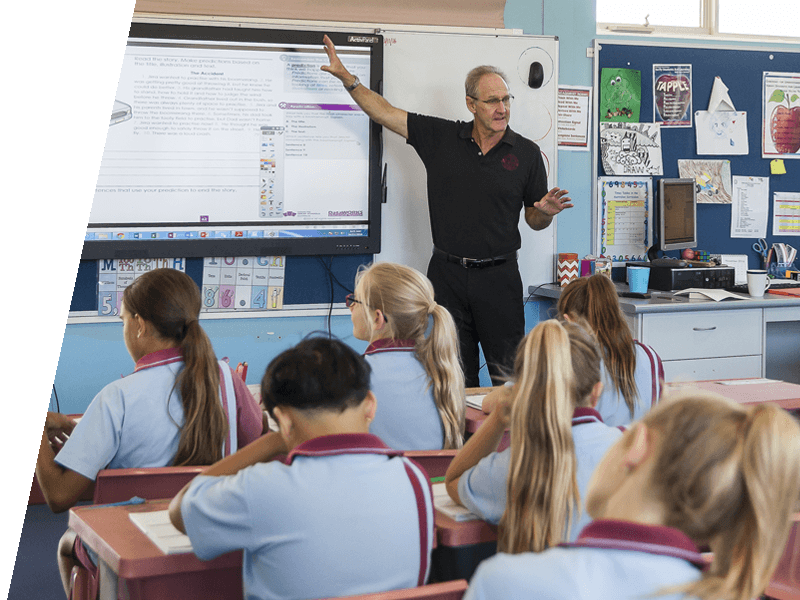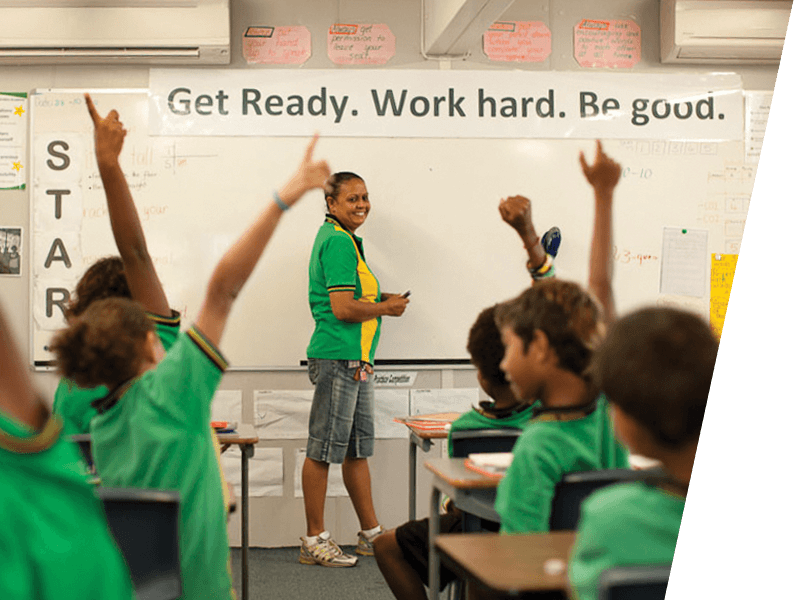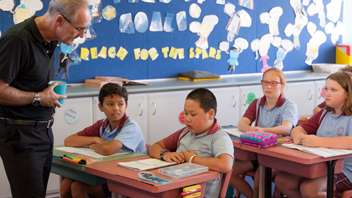
Our education challenge
Australian schools are not meeting the foundations for all students
Twenty percent of high performing schools are failing to meet the basic needs of every child. We are a long way from being able to deliver consistently good 21st century schools.
Students are not meeting national baseline proficiency in numeracy
Students are not meeting national baseline proficiency in literacy
Students are developmentally vulnerable and not adequately prepared for school

The national employment challenge
Digital technology is changing our 21st century world and economy. Technologies like machine learning, 3D printing and social media are radically impacting on how we live and work.
In the next two decades, almost half of all Australian jobs will be disrupted by technology. Automation will eradicate many low skill jobs and reduce the amount of professional jobs.
Australian schools will need to offer a 21st century education that prepares students for future jobs. Providing students with skills in order to thrive in the 21st century economy.
The national education challenge
Young people need a range of 21st century skills that span technical capabilities, critical thinking capacity and character qualities.
The foundations for education start with literacy and numeracy. Students first learn to read and write and continue to read to learn more.
Along the way they master critical thinking, develop their character and learn how to adapt and thrive in our every changing world. They also continue to adopt new technology.


Education policy for the 21st century
Australians agree that education is the key to national advancement. So we need to ensure that every school can meet the needs of every child.
School systems have improvement frameworks, but large numbers of schools are not improving. This means thousands of Australian children are missing out on an education.
Almost half of Australian schools are Poor performing and:
- Are over-represented with disadvantage students
- Are more likely to be regional or remote public schools
- Have high proportions of Indigenous students.
What is takes to start improving
McKinsey & Company’s 2010 landmark report, How the world’s most improved school systems keep getting better, studied twenty education systems at different levels of improvement.
It describes how schools around the world that started with Poor performance, became Good, from Good on to Great and some even Excellent. This shows that even the most challenging school systems and subsystems can improve on any point on the poor and excellent continuum.
The report sets out how leaders started by clarifying what performance stage they were at according to their student outcomes. They then put the right interventions in place to achieve the desired improvement in student outcomes. Regardless of their different historical, economic and cultural contexts, these systems implemented a set of common practices for each stage of their improvement journey.
We found this a compelling model for school improvement, as it aligned to the framework we had developed in shifting our Academy schools from Poor to Fair.
We have partnered with McKinsey to work on a model that combines our knowledge and experience. Through this, we have been able to develop an Australian school improvement framework for schools and systems. A ‘Poor to Fair’ implementation is set for a north Australian region in early 2017.
Every state and territory has some kind of a school improvement framework in place to lift their stagnant or poor performing schools. However, there are no systemic improvements across the past decade.
School improvement frameworks are not shifting Poor and Fair schools. They are too generic and do not respond to the school’s starting point on their improvement journey, nor the unique needs of those students. We need an improvement approach that is more targeted to where a school sits on the performance scale if we want to have a more equally distributed quality system.
Australians agree that education is the key to national advancement.

- Limited childhood development services in school or neighbourhood
- No systematic approach to address attendance or school readiness issues
- Ineffective instruction, inappropriate curriculum, inadequate school facility and higher teacher turnover
- Limited ad hoc extracurricular programs
- No formal accommodation of students’ languages and cultures
- Limited or No technology use
- Early childhood support through provision, collaboration or coordination of services
- Targeted strategies to address attendance and school readiness
- Targeted evidence-based schoolwide effective instruction
- Holistic programs that build students’ leadership, social, sporting and creative skills
- Students’ cultures and languages incorporated in rich ways into school life and curriculum
- Use of technology to enhance learning
Australia’s education system can achieve a tectonic lift in performance by targeting the problem areas and focusing on what works best. The three distinct school clusters need three distinct approaches:
-
Lift poor performing schools
Implement a customised proven Poor and Fair school improvement framework across struggling schools. Set a 5–10 year turnaround plan for each school that addresses the needs deficit and continually tracks progress.
-
Prompt stagnant schools in the middle
Adopt proven instruction practices that accelerate all students, but ensure the bottom 20 percent are getting the foundations in place.
-
Free up Great schools to become Excellent
Remove impediments and offer more autonomy to consistently Great schools so they can continue to do what they do best.
According to international evidence the critical factors to address to achieve school improvement are:

Teachers
- Clear on what students are to learn
- Monitor students’ learning and adjust approaches accordingly
- Adopt evidence-based teaching strategies
- Actively seek to improve own teaching
- Consistent rewards and consequences

Instruction
- Students engaged and on task
- Explicit learning goals
- Monitoring responses and learning
- Demonstrations and examples
- Focus on mastery and progress
- Frequent practice and review
- Feedback and positive motivation

Students
- Set challenging expectations
- Increase student’s eagerness
- Respond to level of individual learning
- Follow routines and expectations





